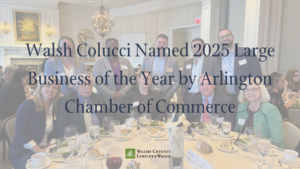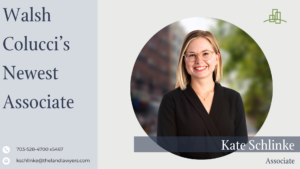Firm attorney John Foote was recently successful for the second time in a single Supreme Court Term. In The Lamb Center v. City of Fairfax, a case Mr. Foote argued, the Virginia Supreme Court reversed the trial court and concluded that the Fairfax City Code could not be read to preclude “accessory or complementary” uses to a principal use when those accessory or complementary uses are comparable to other uses permitted in the same district in a local zoning ordinance.
The Lamb Center operates a counseling center that provides services to homeless persons. Its property is located in a C-2 zoned retail commercial area, and when the counseling center commenced, the City considered it a permissible office use. Subsequently, however, the City concluded that certain additional services provided to those receiving counseling free of charge in the form of light snacks, showers, laundry services, and haircuts, had transformed the otherwise permissible office use into an impermissible “eleemosynary” use not permitted in the C-2 district.
The Supreme Court disagreed, finding the additional services to be, in fact, “accessory or complementary” to the permitted counseling office use. It did so for two reasons.
First, the Court looked to the zoning ordinance and noted that all of the uses permitted by right in the C-1 office district were also permitted in the C-2 district. It further noted that because the C-1 district explicitly allowed for barbershops, restaurants, refreshment areas, and health clubs as accessory uses, that it necessarily follows that provision of the additional services to which the City objected were “accessory” to the counseling center’s indisputably permissible C-2 office use.
The Court also observed that because the City had actually known about the Lamb Center’s laundry and shower facilities when it issued the Center non-residential use permits in 1992 and 2001, the City had effectively determined that those showers and laundry services were permissible accessory uses to the counseling center at that time. The Court held that by twice making such a determination the City had already interpreted the term “accessory” to include those laundry and shower services, and that its interpretation should be given great weight in the context of this case. Because both were permissible in 1992 and 2001, those additional services remained permissible accessory uses at the time the City ruled otherwise.
Finding that the trial court had erred in sustaining the City’s violation notices against The Lamb Center, the Court ordered that court to reinstate a Board of Zoning Appeals’ decision that the additional services were in fact “accessory or complimentary” to the Center’s permitted counseling office use.
Key Takeaways:
- Permissible accessory or complimentary uses in one zoning district may be used to determine whether uses in another district are “accessory or complementary” in the latter district when the uses in the first District have been incorporated by reference in that latter classification.
- A zoning administrator’s prior determinations in connection with the issuance of use permits may constitute evidence of a locality’s interpretation of its ordinances, and such an interpretation must be given great weight by a reviewing court.






